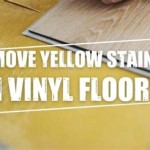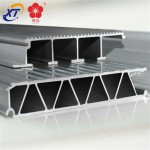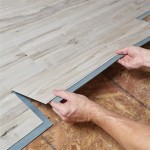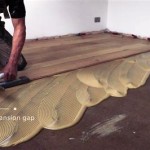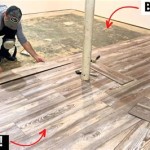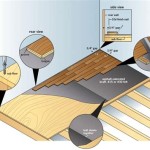Outdoor Concrete Flooring Ideas: Enhancing Your Exterior Spaces
Outdoor concrete flooring presents a versatile and durable solution for enhancing various exterior spaces. From patios and walkways to pool decks and driveways, concrete offers a wide range of design possibilities and practical benefits. Its inherent strength, coupled with advancements in surface treatments and decorative techniques, makes it a compelling choice for homeowners and landscape architects seeking long-lasting and aesthetically pleasing outdoor flooring.
The appeal of outdoor concrete flooring lies in its ability to seamlessly blend functionality with design. Unlike traditional materials like pavers or natural stone, concrete can be poured in custom shapes and sizes, allowing for unique and personalized layouts. Furthermore, concrete's inherent durability ensures resistance to weathering, heavy foot traffic, and vehicular loads, making it a cost-effective and sustainable choice for outdoor applications. This article provides an overview of various outdoor concrete flooring ideas, detailing their characteristics, advantages, and suitability for different applications.
Stamped Concrete: Replicating the Look of Natural Materials
Stamped concrete is a popular choice for homeowners seeking to replicate the look of natural stone, brick, or wood without the associated cost and maintenance. The process involves pouring concrete and then imprinting a desired pattern onto the surface using specialized stamps and tools. A wide variety of stamp patterns are available, ranging from intricate stone textures to classic brick designs, allowing homeowners to achieve a customized aesthetic that complements their architectural style.
The advantages of stamped concrete extend beyond its aesthetic appeal. Stamped concrete is more durable than many of the materials it mimics, requiring less maintenance and offering superior resistance to cracking and weathering. The sealed surface also makes it easier to clean and prevents the growth of mold and mildew, making it an ideal choice for patios, walkways, and pool decks. The initial cost of stamped concrete can be higher than traditional concrete, however, its long-term durability and reduced maintenance costs often make it a more economical option.
The application of stamped concrete involves several key steps. First, the concrete is poured and leveled to the desired thickness and slope. Color hardeners are then applied to the surface to achieve the desired base color. Once the concrete has reached the appropriate stage of setting, the chosen stamp pattern is carefully imprinted onto the surface. Finally, the concrete is sealed to protect the color and enhance its durability. The sealing process also helps prevent staining and fading, ensuring that the stamped concrete retains its beauty for years to come.
Considerations for stamped concrete include the selection of appropriate stamp patterns and colors to complement the surrounding landscape and architectural style. Proper surface preparation is also crucial to ensure a uniform and durable finish. Regular maintenance, including cleaning and resealing, is essential to preserve the beauty and longevity of the stamped concrete surface. Consulting with a qualified concrete contractor is recommended to ensure proper installation and maintenance techniques are followed.
Exposed Aggregate Concrete: Showcasing Natural Stone
Exposed aggregate concrete offers a unique and textured aesthetic by revealing the natural stones and pebbles embedded within the concrete mixture. This technique involves removing the surface layer of cement paste to expose the aggregate, creating a visually appealing and slip-resistant surface. Exposed aggregate is commonly used for driveways, walkways, patios, and pool decks, providing a durable and attractive alternative to traditional concrete surfaces.
The advantages of exposed aggregate concrete include its natural appearance, slip resistance, and durability. The exposed aggregate provides a textured surface that enhances traction, making it a safer choice for areas prone to moisture. The use of durable aggregates, such as granite or quartz, ensures that the surface can withstand heavy traffic and weathering. The exposed aggregate finish also adds a touch of natural beauty to outdoor spaces, complementing landscaping and architectural elements.
The process of creating exposed aggregate concrete involves carefully selecting the aggregates, mixing them with concrete, and then removing the surface cement paste to reveal the aggregate. This can be achieved through various methods, including scrubbing, pressure washing, or the application of chemical retarders. The choice of aggregate significantly impacts the final appearance of the surface, with a wide range of colors and sizes available to achieve different aesthetic effects.
The selection of aggregates is a crucial step in the exposed aggregate process. Homeowners can choose from a variety of natural stones, including granite, quartz, and river rock. The size and color of the aggregates should be carefully considered to complement the surrounding landscape and architectural style. Proper mixing and placement of the concrete are also essential to ensure a uniform distribution of aggregates throughout the surface. Sealing the exposed aggregate surface helps protect the aggregates from staining and weathering, while also enhancing its slip resistance.
Considerations for exposed aggregate concrete include the selection of appropriate aggregates, ensuring proper concrete mixing and placement, and providing adequate drainage to prevent water accumulation. Regular cleaning and sealing are essential to maintain the beauty and durability of the surface. Consulting with a qualified concrete contractor is recommended to ensure proper installation and maintenance techniques are followed.
Colored Concrete: Adding Vibrancy and Personalization
Colored concrete offers a wide range of design possibilities by adding pigments to the concrete mixture. This technique allows homeowners to achieve vibrant and personalized outdoor flooring that complements their architectural style and landscape design. Colored concrete can be used for a variety of applications, including patios, walkways, pool decks, and driveways, providing a durable and aesthetically pleasing surface.
The advantages of colored concrete include its versatility, durability, and low maintenance requirements. The ability to customize the color of concrete allows homeowners to achieve a unique and personalized look that complements their home's exterior. Colored concrete is also highly durable, resisting cracking, fading, and staining. The sealed surface makes it easy to clean and prevents the growth of mold and mildew, making it an ideal choice for outdoor applications.
The process of coloring concrete involves adding pigments to the concrete mixture during the mixing process. Pigments can be added in liquid, powder, or granular form, with the choice of pigment depending on the desired color intensity and application method. The amount of pigment added to the concrete mixture affects the final color, with higher concentrations resulting in more vibrant colors. Proper mixing is essential to ensure a uniform distribution of pigment throughout the concrete.
There are two main types of coloring methods: integral coloring and dry-shake hardeners. Integral coloring involves adding pigment directly to the concrete mix before pouring. Dry-shake hardeners are broadcast onto the surface of the freshly poured concrete and then worked into the surface. Dry-shake hardeners not only add color but also increase the surface hardness and durability of the concrete. Both methods offer a wide range of color options, allowing homeowners to achieve the desired aesthetic effect. The final appearance of colored concrete depends on various factors, including the type of pigment used, the amount of pigment added, and the surface finish.
Considerations for colored concrete include selecting appropriate pigments, ensuring proper concrete mixing and placement, and sealing the surface to protect the color and enhance its durability. The choice of pigment should be carefully considered to ensure that it is compatible with the concrete mixture and resistant to fading. Proper curing of the concrete is also essential to prevent cracking and ensure a uniform color. Regular cleaning and sealing are necessary to maintain the beauty and vibrancy of the colored concrete surface.
Polished Concrete: A Sleek and Modern Option
Polished concrete is increasingly popular for outdoor spaces, offering a sleek and modern aesthetic. This process involves grinding and polishing the concrete surface to achieve a smooth, reflective finish. Polished concrete is durable, low-maintenance, and can be stained or dyed to create a variety of colors and patterns. It is suitable for patios, walkways, and even outdoor kitchens, providing a contemporary look and feel.
The benefits of polished concrete extend beyond its aesthetic appeal. The polishing process densifies the concrete surface, making it more resistant to staining, scratching, and abrasion. Polished concrete is also easy to clean and maintain, requiring only occasional sweeping and mopping. The reflective surface enhances natural light, making it an energy-efficient choice for outdoor spaces. The increased durability of polished concrete ensures that it can withstand heavy traffic and weathering, making it a long-lasting and cost-effective flooring solution.
The process of polishing concrete involves several steps, beginning with grinding the surface to remove any imperfections and expose the aggregate. The concrete is then progressively polished using finer and finer grits of diamond-impregnated pads. This process creates a smooth, reflective surface that is both durable and aesthetically pleasing. Stains or dyes can be applied to the concrete before polishing to achieve the desired color and pattern. Finally, a sealant is applied to protect the surface and enhance its shine.
Proper preparation of the concrete surface is crucial to achieving a successful polished concrete finish. The concrete must be structurally sound and free of cracks or other damage. The surface must also be thoroughly cleaned to remove any dirt, grease, or other contaminants. The polishing process requires specialized equipment and expertise, so it is important to hire a qualified concrete contractor with experience in polishing concrete. The level of polish can be customized to achieve the desired sheen, ranging from a matte finish to a highly reflective surface.
Considerations for polished concrete include the initial cost, which can be higher than other concrete flooring options. However, the long-term durability and low maintenance requirements of polished concrete often make it a more economical choice over time. The surface can be slippery when wet, so it is important to add a non-slip additive to the sealant. Regular cleaning and maintenance are necessary to preserve the shine and durability of the polished concrete surface.
Concrete Pavers: Versatility and Ease of Installation
Concrete pavers offer a versatile and easy-to-install option for outdoor flooring. These individual units can be arranged in a variety of patterns and designs, providing a customized look for patios, walkways, and driveways. Concrete pavers are available in a wide range of colors, shapes, and sizes, allowing homeowners to create a unique and aesthetically pleasing outdoor space.
The advantages of concrete pavers include their durability, ease of installation, and flexibility. Concrete pavers are manufactured to withstand heavy traffic and weathering, making them a long-lasting flooring solution. The interlocking design of pavers allows for easy installation without the need for mortar or special tools. Pavers can also be easily replaced or rearranged, making them a flexible option for homeowners who want to change their outdoor space.
The installation of concrete pavers involves preparing a solid base of compacted gravel and sand. The pavers are then placed on the base in the desired pattern, ensuring that they are level and tightly spaced. Sand is swept into the joints between the pavers to lock them in place. A plate compactor can be used to further compact the pavers and sand, creating a stable and durable surface. The installation process is relatively simple and can be completed by homeowners with basic landscaping skills.
The choice of paver color and pattern significantly impacts the overall aesthetic of the outdoor space. Homeowners can choose from a variety of colors, including gray, brown, red, and tan. Pavers are also available in different shapes, such as rectangular, square, and hexagonal. The pattern in which the pavers are arranged can create a variety of visual effects, such as a herringbone pattern, a running bond pattern, or a circular pattern. Proper drainage is essential to prevent water accumulation and damage to the paver surface. Regular cleaning and sealing are necessary to maintain the beauty and durability of the concrete pavers.
Considerations for concrete pavers include the cost, which can be higher than traditional concrete slabs. The paver base must be properly prepared to ensure a stable and level surface. Regular maintenance, including cleaning and resealing, is necessary to prevent staining and weed growth. Consulting with a landscape designer is recommended to ensure proper paver selection and installation techniques are followed.

5 Ways To Upgrade Your Concrete Patio

9 Diy Cool Creative Patio Flooring Ideas Bahçe Yolları Verandası

Patio Floor Ideas For Spring And Summer Run To Radiance

10 Painted Concrete Patio Floor Ideas So Much Better With Age

An In Depth Look At 30 Concrete Floor Designs Flooring Solutions

10 Painted Concrete Patio Floor Ideas So Much Better With Age

An In Depth Look At 30 Concrete Floor Designs Flooring Solutions

11 Fantastic Patio Flooring Ideas To Transform Your Home

14 Outdoor Flooring Options Ultimate Guide

13 Great Diy Outdoor Patio Flooring Ideas On A Budget The Garden Glove
Related Posts

